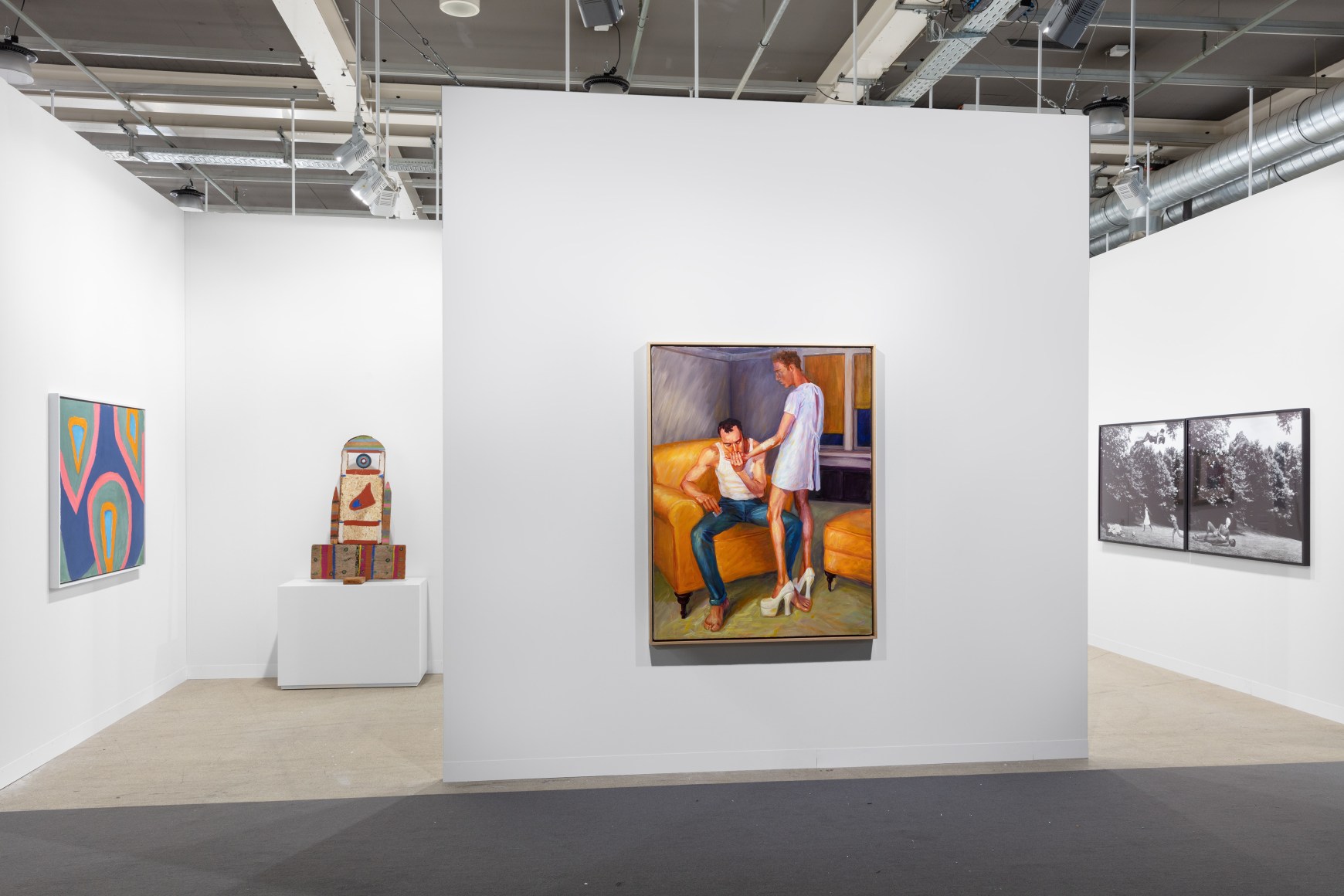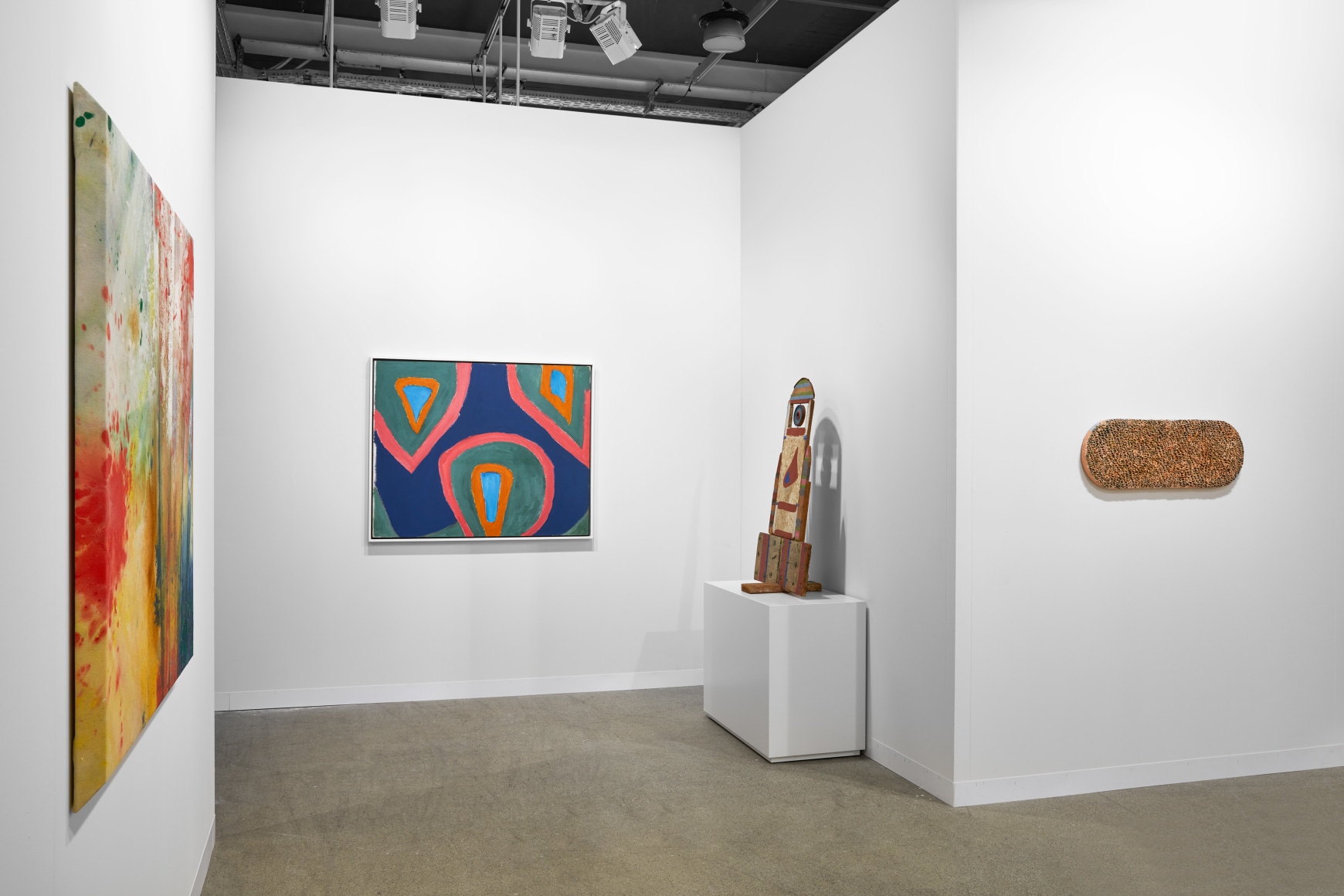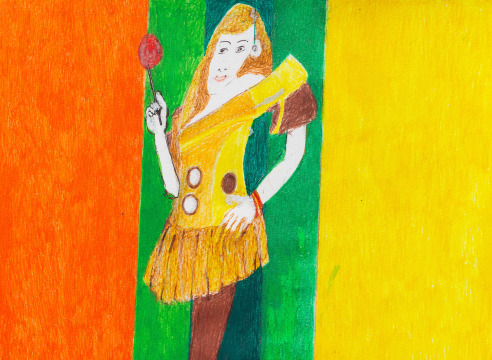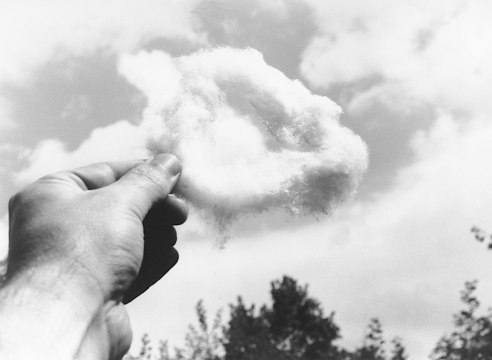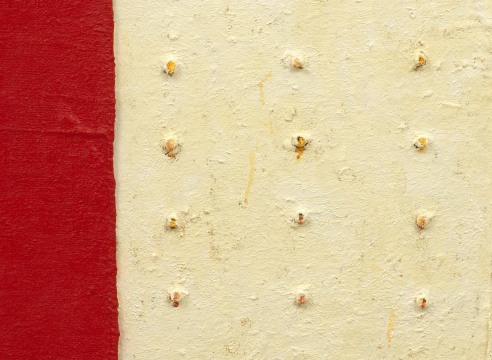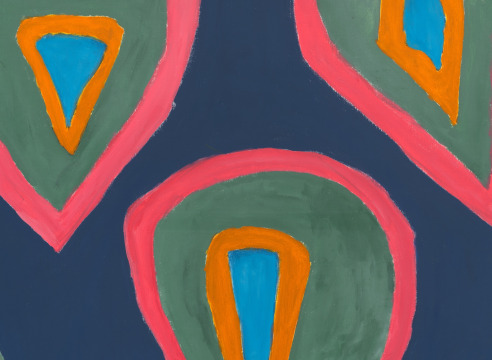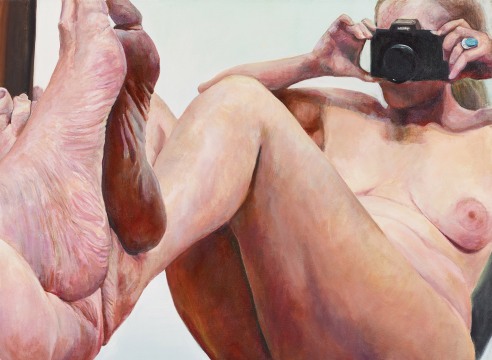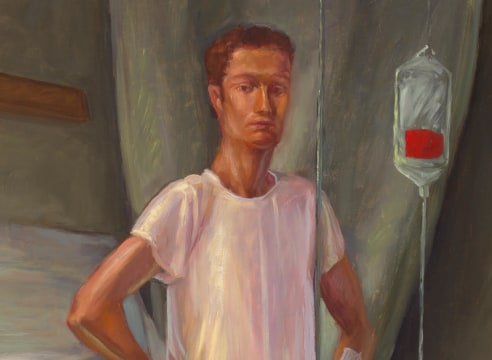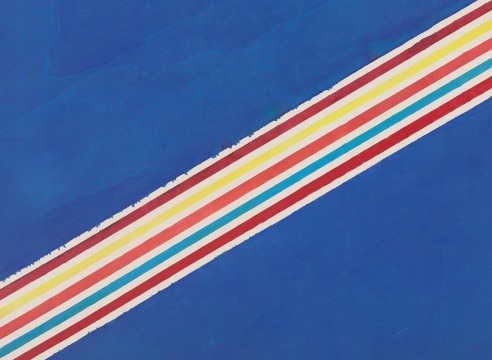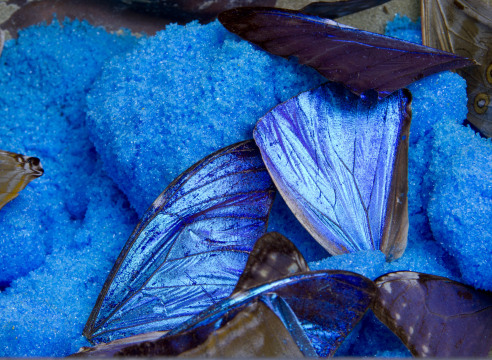
Art Basel 2021 | Switzerland | Galleries Sector | Booth P17 | September 21–26, 2021
Messeplatz 10, 4058 Basel, Switzerland
Private Days (invitation-only): September 21 – 23, 2021
Public Days: September 24 – 26, 2021
Alexander Gray Associates presented recent and historic works by Frank Bowling, Ricardo Brey, Teresa Burga, Luis Camnitzer, Melvin Edwards, Sam Gilliam, Harmony Hammond, Lorraine O’Grady, Betty Parsons, Joan Semmel, and Hugh Steers. These eleven artists challenge conceptual and formal conventions, opening new avenues and expanded understandings of art-making. Their pioneering practices foreground new approaches to abstraction, materiality, and representation while offering distinctive social critiques.
Frank Bowling, Melvin Edwards, and Sam Gilliam integrate social and political concerns into their practices, utilizing radical or improvisational techniques to question the limits of painting. In the 1970s, Bowling experimented with alternative methods of image-making, developing a special mechanical apparatus that enabled him to tilt his canvases and pour paint from great heights. This device generated mesmeric compositions, giving rise to the roiling eddies of pigment of The Other Wadi (1977). Similarly inventive in his approach, during this period, Gilliam turned to beveled stretcher bars to re-conceptualize the structure of painting. Works like Wash (1973) project off the wall, propelling themselves into the viewer’s space and interrogating properties of color, light, depth, and form. Meanwhile, Edwards’s ongoing series of Lynch Fragments intuitively combine materials and forms from seemingly disparate contexts, synthesizing diverse political and personal histories to reflect the lived experiences of African Americans.
Like Edwards, Lorraine O’Grady explores the nature of Black subjectivity, constructing diptychs that map the connections between image and identity. In The Clearing: or Cortés and La Malinche, Thomas Jefferson and Sally Hemings, N. and Me (1991/2019), she draws attention to an often silenced history of interracial relationships. O’Grady considers herself a product of these encounters and claims that they are foundational to the colonized western hemisphere—in her words, they are “what was actually making America ‘America.’”
Where Edwards and O’Grady engage with Black experience as a core concept of their work, Harmony Hammond and Joan Semmel draw on their experiences as women who emerged as artists during Second-wave feminism. Taking a material-driven approach to abstraction, in Yum Yum (1977), Hammond evokes the traditionally female craft of weaving to reframe the history of modernism through a feminist lens. In a similarly recuperative vein, Semmel’s Hanging Out (1985), with its depiction of a solitary figure reclining in a hammock, asserts a woman’s right to access pleasure, relaxation, and nature on her own terms. Semmel's engagement with art historical concepts is also evident in the work’s watery washes of color and impressionistic splashes of light, which lay claim to a plein-air tradition that has historically foregrounded male painters.
Also updating the art historical canon, Hugh Steers’s Hand (1994) evokes the tender domestic tableaux of Post-Impressionist painters like Pierre Bonnard and Édouard Vuillard. Depicting a seated man kissing the palm of his lover, perhaps after an attempt at self-harm, the artist’s poignant composition expresses the realities of life during the AIDS epidemic—a time when love and death were inextricably linked for gay men.
Like Steers, Ricardo Brey’s work absorbs historical and cultural legacies into his own visual vocabulary and symbolic world. While elements of the hybridized culture of his native Cuba are emblematic of his art-making, Brey is also a rigorous student of Western art history, joining a sophisticated engagement with its tropes to an undeniably Caribbean frame of reference. In his Kouros series of sculptures from 2012 and 2013, Brey takes the famed classical Greek sculptural motif of a walking male youth, the “kouros,” as a conceptual model. Joining traditional sculpture with assemblage and recycling––practices that reflect the material reality of scarcity in Cuba––Brey’s sculptures have a distinctive presence that is at once classical and undeniably contemporary.
Luis Camnitzer similarly combines, formal, conceptual, and material elements into eloquent expressions of cultural commentary or philosophical puzzles. In the 1970s, he began his series of Object Boxes (1973-78), wooden boxes with glass fronts and backs with brass plates low on their faces, usually an engraved title in English or Spanish, and a range of additional elements. Exemplifying Camnitzer’s interest in explicitly linking objects and words, the Boxes allow the viewer to assume and identify a relationship between the coupled elements and text.
In contrast to Camnitzer’s clever semiotic play, during her lifetime, Betty Parsons was committed to abstraction. A dedicated painter and sculptor, she played a pivotal role in the history of modernism. Works like Barara No. 2 (1979) encapsulate her intuitive approach to color and form. With its evocative pseudo-architectural arrangement of volumes, Barara echoes the stacked planes of Teresa Burga’s Edificios (1967–1968). A rare early work on paper by the artist, the composition reduces the Baroque buildings of Lima into simple shapes that recall those of celebrated early abstractionists like Piet Mondrian.
Cumulatively, these eleven artists chart a changing global social and political landscape. They harness the potential of art to critically reflect on the legacy of modernism, advocating against racial oppression, gender inequality, and sexual discrimination. As O’Grady once summarized, “I think art’s first goal is to remind us that we are human, whatever that is. I suppose the politics in my art could be to remind us that we are all human.”

